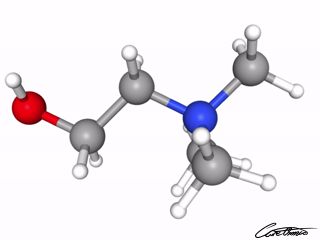Cholines: How To Use Them For Your Benefit
Cholines are essential micronutrients. The body can produce small amounts on its own in the liver, but not enough to meet daily needs. Sufficient amounts of cholines must be obtained through the diet.
Cholines are used in the synthesis of certain phospholipids ◳, like phosphatidylcholine and sphingomyelin. They are essential structural components of cell membranes.
Tip! If you are looking for a specific choline, I recommend you use the expanded toc to find it.
Table of Contents
Foods With Cholines
Animal foods contain more choline per unit weight than plant sources. The richest sources are meat, fish, poultry, dairy, and eggs. Certain plant foods such as broccoli provide some dietary choline.
The Benefits Cholines Can Provide
Choline in the diet is necessary for many reasons. It is crucial for several functions ◳ across the life cycle. They have many roles in human metabolism, from neurotransmitter synthesis to cell structure.
Benefits of cholines when pregnant
The RDI for choline increases during pregnancy and lactation. Because of the high rate of choline transfer from the mother to the fetus and into breast milk.
Choline supplementation, when pregnant ◳, has been shown to improve an infant's information processing speed. Choline might improve effective, cognitive, and neural functioning when taken by mothers carrying a fetus with Downs syndrome.
All Our Articles On Different Types Of Cholines
Choline is a family of both fat-soluble and water-soluble organic compounds. Here is a list of the most common choline compounds.
Choline

Choline is an essential nutrient.
It is not classified as a vitamin or a mineral.
Learn more about choline in our article: What Is Choline & What Foods Can I Find It In?
Free Choline is important for cells
Free choline is one of the most common sources of choline. More information about free choline in our article: What Is Free Choline & What Foods Can I Find It In?
Free choline provides structural integrity to cell membranes and plays a role in cell signaling. Learn about its benefits in our article: Free Choline: 6 Research-Backed Benefits
Sphingomyelin is synthesized by others
Sphingomyelin is a fat-soluble nutrient. You can read more about this nutrient in our article: What Is Sphingomyelin & What Foods Can I Find It In?
Sphingomyelins are synthesized by transfer of other cholines. Sphingomyelin has a benefit that you can read about in our article: Sphingomyelin: One Research-Backed Benefit
Glycerophosphocholine can increase growth hormone
Glycerophosphocholine is a water-soluble nutrient. You can read more about this nutrient in our article: What Is Glycerophosphocholine & What Foods Can I Find It In?
Glycerophosphocholine increases growth hormone secretion and hepatic fat oxidation. See more about the benefit in our article: Glycerophosphocholine: One Research-Backed Benefit
Phosphocholine is aiding damaged cells
Phosphocholine is a phosphate of choline. See more in our article: What Is Phosphocholine & What Foods Can I Find It In?
Phosphocholine plays a vital role in aiding when a cell is damaged. Check out what other kinds of benefits this nutrient have in our article: Phosphocholine: 2 Research-Backed Benefits
Phosphotidylcholine is the most common choline
Phosphatidylcholine is the most common choline in the body. Phosphatidylcholine accounts for about 95% of total choline in tissues. Learn more about this nutrient in our article: What Is Phosphatidylcholine & What Foods Can I Find It In?
Phosphatidylcholine has shown beneficial results in treating the chronic inflammatory disorder, ulcerative colitis. See what other benefits this nutrient have in our article: Phosphotidylcholine: 3 Research-Backed Benefits
